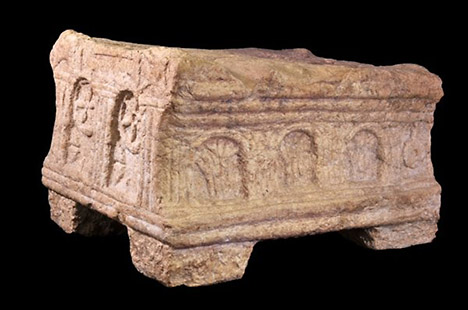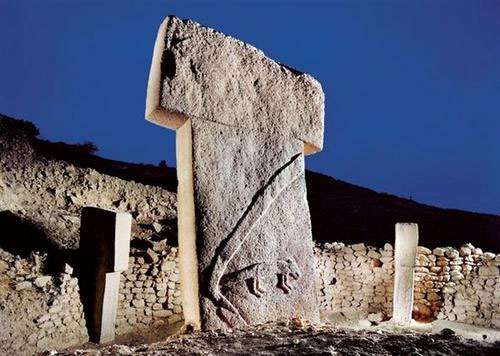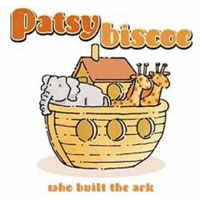Dec
10
2015

A Carved Stone Block Upends Assumptions About Ancient Judaism
BEIT SHEMESH, Israel — The carved stone block is about the size of an occasional table. It has held its secrets for two millenniums. Whoever engraved its enigmatic symbols was apparently depicting the ancient Jewish temples.
But what makes the stone such a rare find in biblical archaeology, according to scholars, is that when it was carved, the Second Temple still stood in Jerusalem for the carver to see. The stone is a kind of ancient snapshot.
And it is upending some long-held scholarly assumptions about ancient synagogues and their relationship with the Temple, a center of Jewish pilgrimage and considered the holiest place of worship for Jews, during a crucial period, when Judaism was on the cusp of the Christian era.
Continue reading
Comments Off | tags: Archaeology, Bible history | posted in Apologetics, The Last Days
Mar
1
2010
The Bible vindicated yet again, by a site that dwarfs Pompeii

Ben Witherington comments on the unearthing of a huge temple complex and its relevance to Genesis:
This temple lies west of the Biblical plain called Haran and is only 20 miles from the Syrian border. This places it right in the fertile crescent which begins below modern day Iraq, includings the Tigris and Euphrates rivers and winds its way north through Syria and into eastern Turkey. This is the world not only of Genesis, but of the great Anatolian civilization of the Hittites (yes those Hittites as in Uriah the Hittite—husband of Bathsheba)… Klaus Schmidt and his team of Kurdish diggers have uncovered an enormous temple complex that pre-dates the Great Pyramids by some 7,000 years and Stonehenge by at least 6,000 years!… After 12 years of hard work, Schmidt has found at least four temple complexes. The radar scans of the area indicate there is a huge amount more to uncover here. And Schmidt has a thesis about this temple complex—here is a short excerpt from the Newsweek article on this:
“Schmidt’s thesis is simple and bold: it was the urge to worship that brought mankind together in the very first urban conglomerations. The need to build and maintain this temple, he says, drove the builders to seek stable food sources, like grains and animals that could be domesticated, and then to settle down to guard their new way of life. The temple begat the city.”
The importance of this find for Biblical thinking is this—the Bible says that from the outset, human beings were created in God’s image. Human beings were religious creatures from Day One. Archaeologists and sociologists have long dismissed this theory saying organized religion comes much later in the game than the beginning of civilization and city building. As Ian Holder director of Stanford’s prestigous archaeology program says— this is a game changer. Indeed, it changes everything experts in the Neolithic era have been thinking. Schmidt is saying that religion is the cause of civilization, not the result of it. Towns were built to be near the Temple complex. Agriculture was undertaken to feed those living there and supply the temple complex, and so on. The first instincts of humans were to put religion first. Maybe there is more to that Genesis story than some have been willing to think or admit. Maybe human beings are inherently homo religiosis.
Continue reading
Comments Off | tags: Archaeology, Ben Witherington, Genesis, The flood | posted in Creation, Quotes
Jul
26
2009

My friend Matt has been blogging about how postmodernism, with its openness to narrative, is a great opportunity for the gospel. But evangelicals need to sort themselves out first. Otherwise, to the world, they are just a bunch of Patsys. Patsy Biscoes that is.
Continue reading
4 comments | tags: Archaeology, Compromise, Gnosticism, Ideology, James Jordan, Liberal theology, N. T. Wright | posted in Apologetics, Biblical Theology
Jun
29
2009
James Jordan’s work on the Jew-Gentile oikoumene set up in Daniel has far reaching implications.1 Peter Leithart writes:
“Yoder argues that from the time of the Babylonian captivity, the Jews developed a proto-”free church” model of community life. True in some respects. Jews didn’t have their own polity. But I’ve got doubts if that’s a fair characterization of Jews in and after the exile.
Continue reading
Comments Off | tags: AD70, Archaeology, Daniel, Esther, Exile, Hellenism, Mordecai, Nehemiah, oikoumene, Peter Leithart, Tertullian, Yoder | posted in Biblical Theology, Quotes, The Last Days, The Restoration Era




























